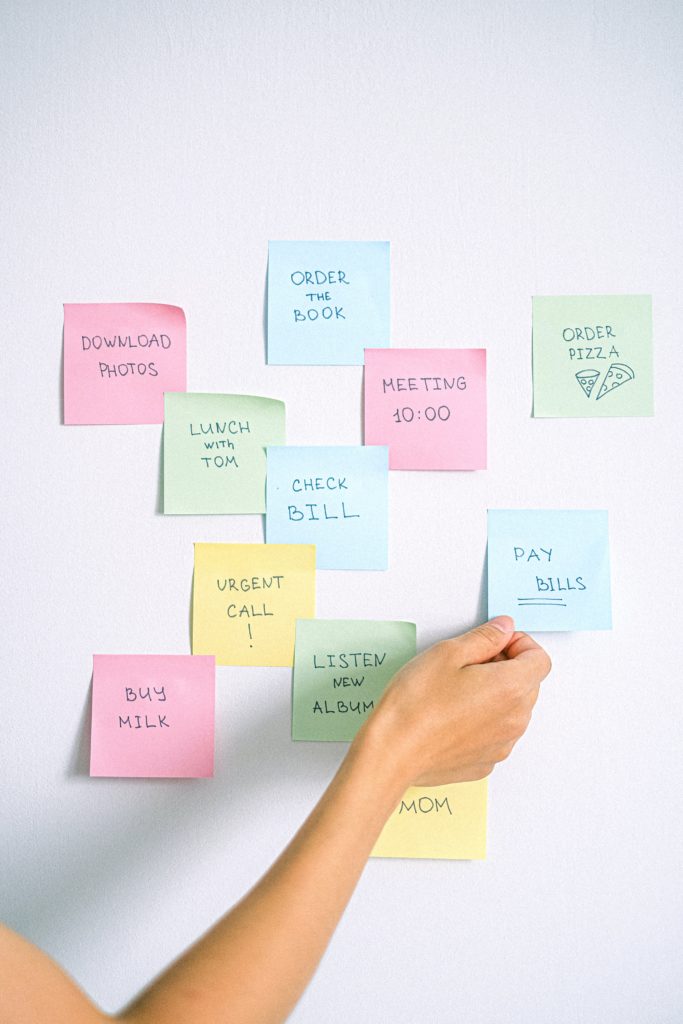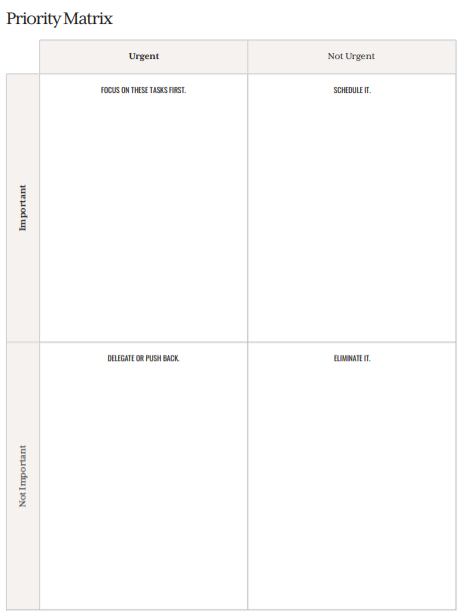
Every so often our modern lives can get out of balance. Even though we try to achieve more with less time and maintain some semblance of order, stress, anxiety and overwhelm can pile on catching us off guard when we least have time for it.
Our physical and digital environments and our relationships can take a toll when this happens – mounting laundry, dishes, and emails and unreturned phone calls.
When I’ve got too much going on and need to catch my breath, I typically power through and battle any immediate fires as best as I can until I can carve out some time on my calendar and work on Operation Prioritization.
I am a firm believer that there will be time for everything, just not all at the same time. To figure out what is truly essential, it takes thoughtful prioritization as well as compartmentalizing our lives a bit. We can only be at one place at one time, and focusing on one thing. It’s unrealistic for us, or anyone else, to think that we can manufacture or pause time.
Now, here are the details of how to get peace of mind and know you’re always working on the right things at the right time:
Usually when I feel overwhelmed, I make a COMPLETE list of all the tasks I need to do and upcoming deadlines/events. Many of them are already at the forefront of my mind, in the form of worry. Once I get through the things I can remember, I go through my inbox (physical mail + email) to ensure I’ve been thorough. I try to get to the coveted “inbox zero” at least once per quarter. While I would like to say I proactively do this, that’s not the case. It’s generally only achieved as a result of deciding to press the pause button.
Next, take out a piece of paper and draw a box with a 2×2 grid. On the left-side of the box, begin at the very bottom and mark it “Low Urgency.” At the very top mark it “High Urgency” and draw an arrow from the bottom to the top.
Along the bottom, mark, ‘Low Importance” on the left hand side of the bottom of the box and “High Importance” on the right-hand side of the bottom of the box, drawing an arrow from left-to-right. Now you have four distinct ways to categorize your tasks like this:

Not everyone will agree that you need to take a moment to yourself to do so, and certainly not everyone will agree with what is prioritized when they have a vested interest in your task list. Navigating this aspect takes some self-advocacy, communication, and negotiation, which takes practice. However, as far as stakeholders go, there is no one that is better positioned to map out your priorities than you.
The first time I shared my simple method, I immediately received an ecstatic message:
“I have been using this tool for all of 2 work days, and it has already helped me to improve my productivity. I think one of the biggest reasons why I was not accomplishing as much was because I tend to put everything on high priority and then I get tired thinking of all the things I have to do.”
So, how did I come up with this trick up my sleeve? I didn’t. I worked as a corporate consultant for many years traveling the U.S. and one of the partners at the consulting firm I worked with introduced me to this type of prioritization tool known as the Eisenhower method, made famous by the former U.S. President Dwight D Eisenhower.
The partner had to learn to effectively prioritize his work and his health after recovering from a severe heart attack, which I might add, he had at work while under the pressure of a major deadline. He only lived to tell this cautionary tale because he recognized the signs of a heart attack and hailed a taxi mid-heart attack. Ambulances don’t stand a chance navigating gridlocked traffic in downtown Chicago, so he was incredibly lucky he made it to the hospital in time.
From there on out, he always closed his laptop by 5:30 pm because he had to fit in some cardiovascular exercise before dinner every night. He also gave up red meat and became a master at delegating and saying no. He was very efficient during his workday, and I like to think that a little rubbed off on me.
This is a great reminder of perspective as well and remembering what is truly important. I used to treat every client’s deadline like it was an emergency, and many of my colleagues also prioritized getting their work done by putting their personal lives’ on the back burner for the foreseeable future. Nobody cared when/how work got done, only that it did. This worked fine for me, while I was young, healthy, and single, but I always knew this type of approach would not be sustainable. I only wish I learned this secret much sooner, so that I had more time to have fun.
